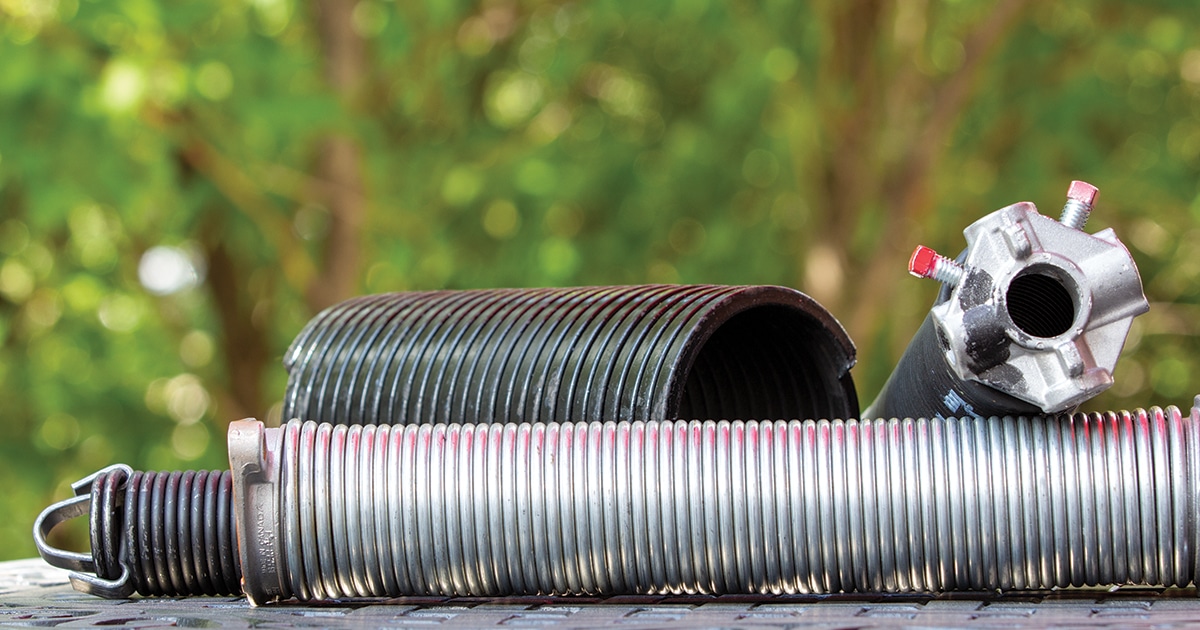In the realm of garage door operation, springs play an indispensable role that often goes unnoticed until they falter. Despite their underappreciated status, these components are essential for the optimal functionality of both manual and automatic garage doors. They bear the weight of the door during opening and closing processes, ensuring smooth motion, preventing abrupt drops, and extending the lifespan of other parts involved in this complex mechanism.
With different types such as torsion and extension springs available on the market, selecting a suitable replacement requires comprehensive understanding about each type’s unique features and compatibility with specific door designs.
The process of replacing worn-out springs is not just a common maintenance task but also a proactive strategy that enhances overall door performance. This procedure can potentially prevent inconvenient or even hazardous situations including sudden door malfunctions or slow response times – all stemming from faulty springs. The benefits it brings extend beyond mere operational efficiency: investing in regular spring replacements conveys a commitment to safety and represents prudent homeownership decisions.
By exploring this topic in depth, readers will gain insights into making informed choices regarding their garage doors’ upkeep while simultaneously fostering a sense of belonging to an enlightened community that values functional aesthetics and long-term durability.
Understanding the Role of Springs in Door Operation
The functionality of a garage door is largely dictated by the efficiency of its springs, which play an integral role in both lifting and closing mechanisms.
The springs serve to counterbalance the weight of the door, making it possible to open or close with minimal effort. Essentially, when the garage door is lowered, the tension in these springs is increased – stored potential energy that will be utilized to lift the door again.
Conversely, as the door opens, this energy gets released aiding in effortless operation. Understanding this fundamental principle underlining spring function leads to a clearer grasp on their importance.
There are two primary types of garage doors springs: torsion and extension springs. Torsion springs work using torque rotating around an axis while extension springs extend or stretch under force. They both have unique characteristics suited for different types of doors and usage patterns; hence meticulous assessment is crucial when choosing between them.
For instance, torsion springs are generally more durable and safer than extension ones but incur higher initial costs; whereas extension springs are more cost-effective options for lighter doors but may require more regular maintenance and replacements due to their propensity towards wear-and-tear.
Properly maintaining these components prolongs not only their lifespan but also enhances overall door performance while ensuring safety measures remain stringent. A deteriorated spring’s inability to effectively balance forces can lead to accelerated wear on other elements within your garage system —an eventuality that might necessitate extensive repairs or even complete overhauls than simple spring replacement would’ve sufficed initially.
Therefore, periodic inspections become essential preventative measures—promptly identifying any signs of fatigue or damage before they escalate into larger issues—keeping one’s residential space secure whilst fostering a sense of belonging within its confines through sustained functionality and durability.
The Process and Benefits of Replacing Worn-Out Springs
Is it not intriguing to consider how replacing worn-out springs can significantly extend the lifespan and improve the functionality of your garage entry system?
Indeed, the degradation of these essential components is inevitable over time, due to continuous usage and exposure to various environmental factors. However, through proactive replacement of these deteriorating springs, one can ensure that their garage door operates smoothly and efficiently for a longer period.
Replacing worn-out springs involves several intricate steps that necessitate an in-depth understanding of different types of garage doors and their mechanisms. Initially, the type and size of the existing spring should be determined accurately since each door requires specific springs based on its weight and height. Then, after safely releasing tension from the old spring, it is removed and replaced with a new one. The new spring is then wound up to generate sufficient force for lifting the door. This process should ideally be carried out by trained professionals as amateur attempts might lead to accidents or further damage to other components.
The benefits derived from this preventive maintenance strategy are manifold. Apart from prolonging functional longevity and ensuring seamless operation, timely replacement of worn-out springs also contributes towards reducing potential risks associated with sudden breakdowns or failures. Moreover, in doing so homeowners establish a sense of security knowing that their vehicle’s protection is robustly maintained. It also fosters a sense of belonging among conscious homeowners who take pride in maintaining their homes while encouraging others in their community to do the same.
https://perfectsolutionsgaragedoor.com/when-and-why-you-should-consider-replacing-your-garage-door-springs/
https://perfectsolutionsgaragedoor.com/replacing-garage-door-springs-professional-advice-and-methods/


